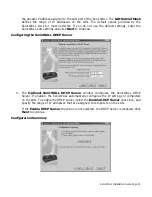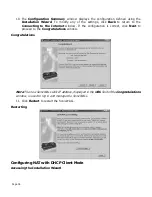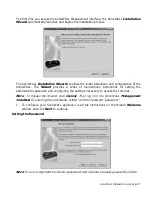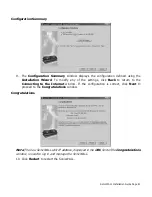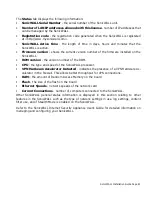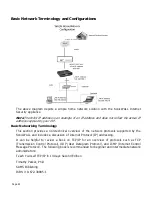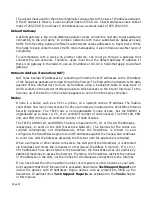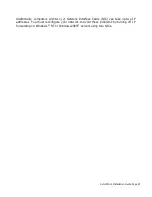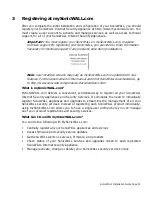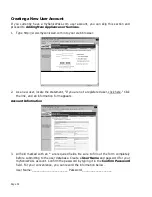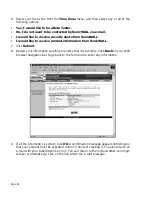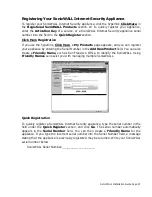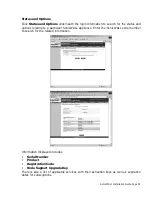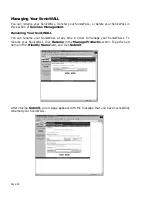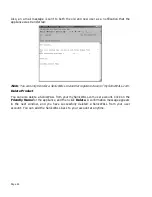
Page 48
The subnet mask used for the network typically corresponds to the class of IP address assigned.
If the IP address is Class A, it uses a subnet mask of 255.0.0.0. Class B addresses use a subnet
mask of 255.255.0.0, and Class C IP addresses use a subnet mask of 255.255.255.0.
Default Gateway
A default gateway is like a long distance operator. Users can dial the operator to get assistance
connecting to the end party. In complex networks with many subnetworks, gateways keep
traffic from traveling between different subnetworks unless addressed to travel there. While
this helps to keep overall network traffic more manageable, it also introduces another level of
complexity.
To communicate with a device on another network, one must go through a gateway that
connects the two networks. Therefore, users must know the default gateway IP address. If
there is no gateway in the network, use an IP address of 0.0.0.0 in fields that apply to a default
gateway.
Network Address Translation (NAT)
NAT hides internal IP addresses by converting all internal host IP addresses to the IP address
of the firewall as packets are routed through the firewall. The firewall then retransmits the data
payload of the internal host from its own address using a translation table to keep track of
which sockets on the exterior interface equate to which sockets on the interior interface. To the
Internet, all of the traffic on the network appears to come from the same computer.
Nodes
A node is a device, such as a PC or a printer, on a network with an IP address. The feature
chart shows how many node licenses for PCs or printers are included with a SonicWALL Internet
Security appliance. The TELE3 has a non-upgradeable 5-node license, but the SOHO3 is
upgradeable up to have 10, 50, or an unlimited number of node licenses. The PRO 100, PRO
200, and PRO 300 have an unlimited number of node licenses.
The TELE3, SOHO3-10, and SOHO3-50 allow a maximum of 5, 10, or 50 LAN IP addresses,
respectively, to exist on the LAN (Local Area Network). The licenses for the nodes are
counted cumulatively, not simultaneously. When the SonicWALL is turned on and
configured, the SonicWALL begins to count IP addresses against the license, and continues
to count new LAN IP addresses accessing the Internet until the appliance is rebooted.
When a computer or other device connects to the LAN port of the SonicWALL, it is detected
via broadcast and stores the computer or other device IP address in memory. If 5, 10, or
50 IP addresses have been stored in the SonicWALL, the SonicWALL does not permit any
additional machines to access the Internet. Therefore, the SonicWALL restricts the number
of IP addresses on the LAN, not the number of simultaneous connections to the Internet.
If you have fewer than the maximum number of computers or other devices on your LAN,
but it appears that the IP license limit is exceeded, download a
Tech Support
Report
and
review the devices with IP addresses. Rogue devices such as printers are filling up the
SonicWALL IP address limit.
Tech Support Reports
are explained in the
Tools
chapter
of this manual.
Summary of Contents for GX 250
Page 1: ...SONICWALL Installation Guide...
Page 51: ...Page 50...


